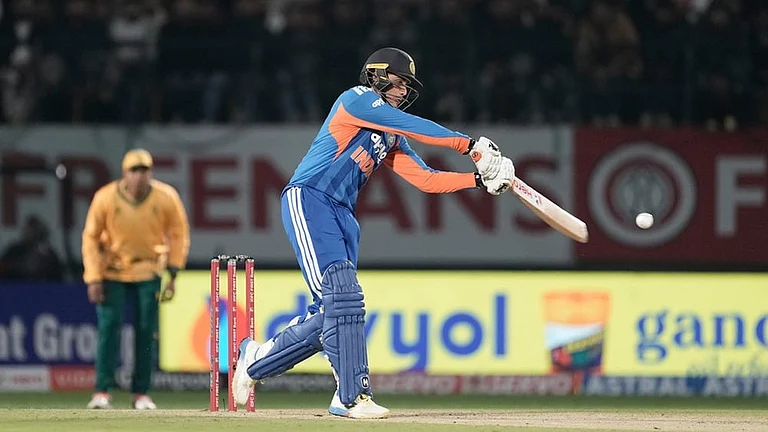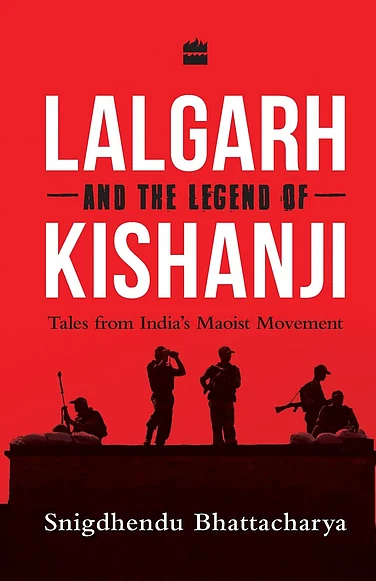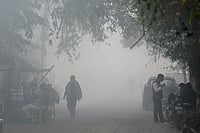Few constitutional provisions have been as contested as Article 370 of the Constitution of India. While supporters often dubbed it as the bridge between Jammu and Kashmir and the rest of India, critics said it prevented a complete integration of J&K with India and made way for discriminatory provisions.
In line with the foundational principles of the Bharatiya Janata Party (BJP), the Narendra Modi government effectively abrogated Article 370 in August 2019. Soon, critics of the move approached the Supreme Court to challenge the Modi government's action.
While there is a common perception that Article 370 has ceased to exist, that is not the case. The Modi government clauses of Article 370 itself with some other constitutional provisions to effectively defang the provision. While it is still there in the Constitution, it is now effectively null and void in spirit.
After four years of pendency, the Supreme Court took up pleas and heard the arguments against and in favour of the government's decision. After 16 days of hearing, the five-judge Constitution Bench of the Apex Court reserved the judgement in September. Later today, the Chief Justice of India DY Chandrachud-led bench is set to deliver the verdict in the case. The bench also comprises Justices SK Kaul, Sanjiv Khanna, BR Gavai, and Surya Kant.
Here we explore the origins of Article 370 and its timeline up to the abrogation and the Supreme Court judgement.
Article 370 Origins
Article 370 stems from the Accession of Jammu and Kashmir to India in October 1947. The unique circumstances of the accession paved way for Article 370 and the 'special status' of the state.
The J&K's special status included the state having its own flag and Constitution and its own penal code instead of the Indian Penal Code (IPC) applicable in the rest of the country. The laws made by the Parliament also had limited implementation in the state. There were also restrictions on the ownership of property and employment opportunities for Indians from outside the state.
Such a situation emerged from the unique circumstances that led to J&K becoming part of India. In 1947, three princely states still remained outside of both India and Pakistan — J&K, Junagarh, and Hyderabad. The J&K's ruler, Maharaja Hari Singh, wanted to be independent, but that was not to be as Pakistan attacked the state. Singh asked New Delhi for help and the accession to India was termed as a prerequisite for any military help against the Pakistani invasion.
Therefore, in October 1947, Singh ceded J&K to India through the Instrument of Accession (IoA), but it was not that simple. The terms of the IoA were such that the Government of India would only be responsible for defence, external affairs, and communications of J&K. In the rest of the affairs, J&K would be autonomous. That was like no other state. Moreover, the IoA did not commit J&K to any future Constitution of India, which was being drafted at the time by the Constituent Assembly of India. The IoA was itself immune from any future amendment until a "supplementary" instrument was signed by Singh.
"Nothing in this Instrument shall be deemed to commit me in any way to acceptance of any future constitution of India or to fetter my discretion to enter into arrangements with the Government of India under any such future constitution," said the IoA.
Such a situation meant that while J&K had ceded to the Dominion of India, there was no arrangement for it to be part of the state structure. The state would also effectively remain out of the bounds of the Constitution of India. These issues were solved by Article 370.
Article 370 Timeline: Birth And Evolution Over Years
1948: The Government of India clarified that the Accession of Jammu and Kashmir to India was "provisional" and it would be considered final only when the will of the people backed the decision.
"The accession was legally made by the Maharaja of Kashmir and this step was taken on the advice of Sheikh Abdullah, leader of the All- Jammu and Kashmir National Conference, the political party commanding the widest popular support in the state. Nevertheless, in accepting the accession, the Government of India made it clear that they would regard it as purely provisional until such time as the will of the people of the state could be ascertained," said a Government of India white paper.
The will of the people of the J&K would be reflected by the J&K leaders who would join the Constituent Assembly of India.
1949: Sheikh Abdullah, Mirza Mohammed Beg, Maulana Mohammad Saeed Masoodi, and Motiram Bagra joined the Constituent Assembly of India on behalf of J&K.
For the next three months, these four members worked with N Gopalaswami Ayyangar and Sardar Vallabhbhai Pael to work out the constitutional relationship between India and J&K. That eventually took the shape of Article 370. During deliberations, it was provisionally called Article 306.
1950: The Constitution of India comes into force with Article 370 defining the J&K's relationship with India.
The Article 370 meant that only Article 1 and Article 370 itself would be applicable to J&K. The President of India could make any provisions of the Constitution to apply to J&K with "modifications" or "exceptions" but only with the approval of the J&K. Moreover, the provision said that the provision could not be amended or repealed without the say of J&K's Constituent Assembly.
1950: President Rajendra Prasad issued the first President's Constitutional Order (CO) that defined the exact scope of the Parliament in relation to J&K.
1951: A 75-member Constituent Assembly of J&K is formed to draft the Constitution of J&K.
1952: The Delhi Agreement is reached between the J&K leaders and the Government of India, which further clarifies the J&K-India relationship. It further bolsters the special status of the J&K, clarifies the scope of residual powers, and paved way for Article 35A through CO of 1954. Ashok Kumar Pandey, author of 'Kashmirnama', terms the moment as when the J&K "accepted Article 370" and says the provision acquired permanency with it.
1954: President Rajendra Prasad issues CO of 1954 that inserts Article 35A through the powers vested in him by Article 370. It implemented the Delhi Agreement.
The 35A was inserted in the appendix of the Constitution of India and is not actually part of Article 35. The 35A is the most contentious J&K-related provision and the source for the allegations of Article 370 being 'discriminatory' in nature.
The 35A granted 'special rights' to "permanent residents" of J&K which were not available to Indians outside of the state. Such rights related to property purchase, employment, and state benefits. Moreover, women lost their PR status if they married a man outside of the state.
1956: The Constitution of J&K comes into force and the Constituent Assembly of J&K is dissolved. Several scholars are of the opinion that the power to amend Article 370 was lost in this moment as Article 370 specified that it could only be amended or repealed with the say from the Constituent Assembly.
"With the Delhi Agreement, the Constituent Assembly accepted a Sadr-e-Riyasat selected by the members of the assembly in place of the Maharaja as the head of state. With this, they accepted the Article 370. This way, Constitutional Assembly-recommended Article 370 was no longer 'temporary' but because the permanent part of the Constitution of India...As per Article 370 (3), the President of India's order to revoke Article 370 needs the concurrence of J&K's Constituent Assembly but that became impossible with the dissolution of J&K's Constituent Assembly on November 17, 1956," wrote Ashok Kumar Pandey in book 'Kashmirnama' in Hindi.
1962: In a case, Puranlal Lakhanpal v The President of India, the Supreme Court ruled that the President's COs had "wide" powers and the powers were not minor.
"Supreme Court upheld the Presidential Order, stating that the word ‘modification’ in Article 370 should be interpreted broadly to include even an amendment. The Court ruled that the term ‘modification’ should be given the ‘widest possible amplitude’ within the context of Article 370," notes SC Observer.
1968: The Supreme Court in a judgement stated that the Article 370 was still very much there in the Constitution of India.
In Sampat Prakash v State of Jammu & Kashmir, the petitioners argued that Article 370 ceased to exist after the Constituent Assembly of J&K was dissolved, but the SC ruled that was not the case and Article 370 was very much there.
1972: The Supreme Court ruled that the President of India can change interpretation of words through powers under Article 370.
When the title of 'Sadar-i-Riyasat' (President) was changed to 'Governor', it was challenged on grounds that it did not have the say of the Constituent Assembly, but the court ruled that the President could issue such interpretations of words.
This may have significance in the Supreme Court's judgement as the Modi government's case for the abrogation of Article 370 rests in a big way on a series of such interpretations.
2016: The Supreme Court in a case observed that the concurrence of the Constituent Assembly was required to abrogate Article 370.
In State Bank of India v Santosh Gupta, the Supreme Court observed that Article 370 would be in effect till the time Constituent Assembly of J&K recommends its cessation.
"During the hearings, the Supreme Court observed that there was no definitive timeline mentioned for the operation of Article 370. The provision would continue to be in effect until a recommendation from the Constituent Assembly was made for its cessation. This judgement further bolstered the idea that the consent or concurrence of the Constituent Assembly of Jammu and Kashmir was crucial to repeal Article 370," noted SC Observer.
2019: After a series of dramatic developments, the Modi government effectively abrogated Article 370, ending seven decades of J&K's special status. With then end of Article 370, the contentious Article 35A was also made inoperable.
Abrogation Of Article 2019
After seven decades of evolution through presidential orders and legal observations, the Modi government effectively abrogated Article 370.
The development came at a time when J&K was under Governor's Rule and there was no elected assembly in the state as it had been dissolved months before after the Bharatiya Janata Party (BJP)-People's Democratic Party (PDP) government fell apart and Mehbooba Mufti resigned as Chief Minister of J&K.
First, the Modi government interpreted the 'Constituent Assembly of the State' with 'Legislative Assembly of the State' by tweaking Article 367 through a presidential order, which paved the way for the Parliament to take a decision on Article 370. Then, the Modi government made a move on Article 370.
Since J&K's legislative assembly was in suspension at the time, the order said that any reference to the legislative assembly will be construed to be a reference to the governor, explains Kaushik Deka in India Today.
"The governor is an appointee of the Central government, and therefore, Parliament now stands in for the state legislative assembly...After this Shah moved a statutory resolution in the Rajya Sabha which recommended that the President issue a notification, using Clause 3 of Article 370, to declare that all clauses of Article 370 would cease to be operative and that all provisions of the Indian Constitution would apply to the state of Jammu and Kashmir. This, in effect, rendered Article 370 null and void even if it had not been repealed," noted Deka further.


























